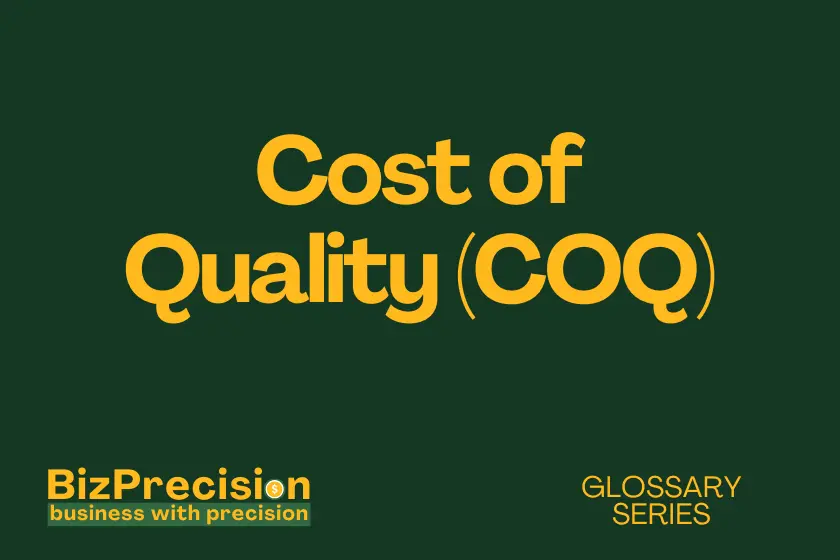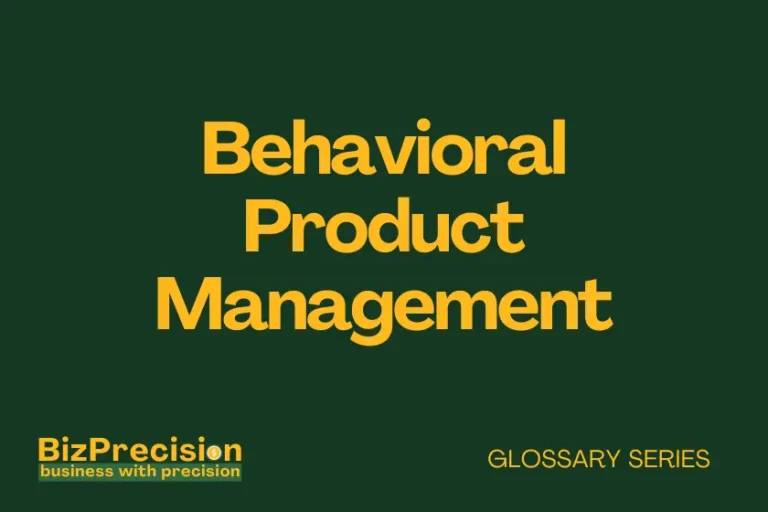What is Cost of Quality (COQ)?
Cost of Quality (COQ) is a management method that measures all expenses related to maintaining product quality, including prevention, inspection, and failure costs.
Quality issues cost companies between 15-40% of their annual revenue, according to a 2023 ASQ Quality Management Study. This figure highlights why understanding COQ matters in business today.
Every dollar you save through quality management goes straight to your bottom line. Let’s explore how COQ works and why it matters for your business success.
Understanding the Components of Cost of Quality
The cost of quality has four main parts. Each plays a vital role in your quality management system.
Prevention Costs
Prevention costs help you stop problems before they start. Think of them as your quality insurance policy.
Quality planning drives success in every business. Companies spend about 0.5-1.5% of sales on prevention costs. This investment helps avoid bigger expenses later.
The main areas of prevention include:
- Quality Planning and Training Programs Training your team in quality methods pays off quickly. A trained worker catches issues early, saving time and money. Each dollar spent on training returns $3 in reduced failure costs.
- Process Design and Improvement Good process design stops problems before they start. When you design quality into your process, you need less inspection later. Companies with strong process design see 30% fewer defects.
- Supplier Evaluation and Certification Working with certified suppliers cuts defect rates by half. Regular supplier audits help maintain consistent quality. Top companies evaluate suppliers quarterly to ensure standards stay high.
Appraisal Costs
Appraisal means checking your work. These costs come from making sure products meet standards.
Your inspection system needs proper funding. Most companies spend 2-4% of sales on appraisal costs.
Key appraisal activities include:
- Inspection and Testing Regular checks catch problems early. Each product needs the right level of testing. Too little testing misses defects, while too much wastes money.
- Quality Audits Internal audits find system weaknesses. Monthly quality audits help track progress. Good audit programs pay for themselves through better quality.
- Calibration of Measuring Equipment Accurate tools give reliable results. Regular calibration prevents measurement errors. Most tools need checking every 3-6 months.
Internal Failure Costs
Internal failures cost money before products reach customers. These costs hurt profits but stay inside your company.
Studies show internal failures typically cost 10-15% of operating expenses. Cutting these costs makes your business more profitable.
Common internal failure areas include:
- Rework and Repairs Fixing mistakes takes time and money. Each rework cycle costs about 25% of the original production cost. Good prevention reduces rework needs.
- Scrap and Waste Thrown-away materials waste resources. Scrap rates should stay below 3% of production. Track scrap daily to spot problems quickly.
- Production Delays Quality problems slow down work. Each hour of delay costs about 1.5 times the normal operating cost. Prevention helps keep production on schedule.
External Failure Costs
External failures happen after products reach customers. These costs hurt both profits and reputation.
Research shows external failures cost 4-5 times more than internal ones. Customer trust takes years to build but minutes to lose.
Major external failure areas include:
- Customer Complaints and Returns Each complaint costs about $250 to handle. Quick response to problems helps keep customers loyal. Track complaint patterns to prevent future issues.
- Warranty Claims Warranty work shows product weaknesses. Each warranty claim costs 3-4 times the original production cost. Good quality cuts warranty expenses.
- Brand Damage and Lost Sales Poor quality hurts future sales. Customers tell others about bad experiences. Strong quality programs protect your brand value.
Measuring and Analyzing COQ
Good measurement helps you manage quality costs better. Let’s explore how to track and use COQ data.
Calculating COQ Metrics
You need clear numbers to manage quality costs. Smart companies track COQ monthly or weekly.
Key measurement areas include:
- COQ as Percentage of Sales Most companies aim for COQ below 15% of sales. Track this number monthly to spot trends. Lower percentages mean better quality management.
- Cost per Unit Breaking costs down per unit helps planning. Track both good and bad units. Compare costs across product lines.
- Trend Analysis Methods Watch how costs change over time. Monthly trend reports guide decisions. Good trends show your program works.
Implementation Strategies
Success needs good planning. Your quality program should fit your business needs.
Essential strategy elements include:
- Data Collection Systems Good data drives good decisions. Set up simple tracking methods. Train teams to record quality costs properly.
- Performance Benchmarks Compare your results to industry standards. Set realistic improvement goals. Track progress against your targets.
- Reporting Frameworks Clear reports help everyone understand. Use simple charts and graphs. Share results with all team members.
Best Practices
Following proven methods saves time and money. Learn from others’ success.
Key practice areas include:
- Industry Standards Know what works in your field. Follow relevant ISO guidelines. Update methods as standards change.
- Documentation Requirements Keep clear records of quality costs. Document your methods and results. Good records help spot patterns.
- Team Responsibilities Everyone plays a role in quality. Define clear job duties. Hold regular team meetings.
Optimizing Cost of Quality
Smart optimization saves money while improving quality. Let’s explore how to get better results.
Quality Management Systems
Good systems make quality automatic. Choose methods that fit your needs.
Popular systems include:
- Six Sigma Integration Six Sigma cuts defect rates sharply. Projects usually pay back in under a year. Training helps teams use tools properly.
- ISO 9001 Compliance ISO 9001 provides a proven framework. Certification shows customers you care about quality. Regular audits keep standards high.
- Total Quality Management (TQM) TQM involves everyone in quality. Teams work together to solve problems. Culture changes support better results.
ROI of Quality Investment
Quality investments should pay off. Track your returns carefully.
Key ROI areas include:
- Cost-benefit Analysis Compare investment costs to savings. Most projects should pay back within 18 months. Keep tracking benefits after completion.
- Long-term Financial Impact Quality improvements compound over time. Good programs reduce costs yearly. Track multi-year benefits.
- Resource Allocation Put resources where they help most. Focus on biggest problem areas first. Balance prevention and correction costs.
Continuous Improvement
Never stop getting better. Small changes add up to big results.
Important improvement areas include:
- Monitoring and Tracking Watch your metrics closely. Respond quickly to problems. Celebrate good results.
- Process Optimization Keep refining your methods. Test new ideas carefully. Share successful changes.
- Employee Engagement Involve workers in improvement. Listen to their ideas. Reward good suggestions.
Conclusion
Understanding and managing Cost of Quality helps your business succeed. Prevention costs less than fixing problems later.
Start by measuring your current quality costs. Then make a plan to reduce them step by step. Focus on prevention while building strong inspection systems.
Remember these key points:
- Prevention costs save money long-term
- Good measurement guides improvement
- Everyone plays a role in quality
- Small changes add up to big savings
Take action now to improve your quality program. Your bottom line will thank you.
Want to learn more? Start by checking your current quality costs. Then pick one area where you can improve this month.






